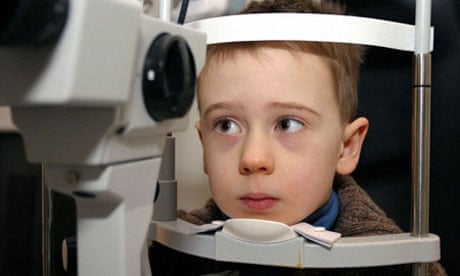Scientists have discovered strands of genetic code linked to short sight, the most common eye disorder in the world.
The findings shed light on what goes awry to make distant objects look blurred, and raises the prospect of developing drugs to prevent the condition.
Understanding the biological glitches behind short-sightedness could help researchers develop eye drops or tablets that could be given to children to stop their vision from failing as they get older.
Short-sightedness, or myopia, usually starts to manifest early on in life.
The extent to which genes are to blame varies, but for those with the worst vision, around 80% of the condition is caused by genetic factors.
Two separate studies, published in Nature Genetics journal, found variations in DNA that were more common in people with short sight. Chris Hammond, at King's College, London, found one section of DNA on chromosome 15 was more common in people with myopia. Caroline Klaver, at Erasmus Medical Centre in Rotterdam, found another strand, also on chromosome 15, linked to short sight.
The variations in DNA amount to misspellings in the genetic code. These alter the activity of three genes that control the growth of the eyeball and ensure light entering the eye is converted into electrical pulses in the retina.
The discovery helps scientists piece together how a healthy eye becomes short-sighted and points the way to medicines to prevent it in children.
"My hope is that we can identify a pathway that we can block with eyedrops or tablets that will stop the eye growing too much and without interfering with normal brain development or other processes in the body," Hammond told the Guardian.
Treating short sight in adults is a much tougher job, as their eyeballs have already grown too long.
Children who inherit genes for short sight are not destined to have poor vision. In 2008, Kathryn Rose at the University of Sydney looked at rates of short sightedness in Chinese schoolchildren living in Singapore and Sydney. Some 29% living in Singapore had short sight, compared with only 3% in Sydney. One possible explanation is that those living in Sydney spent more time outdoors, and so got more natural sunlight and were used to focusing on more distant objects.
Some eye conditions are already being treated by replacing the faulty genes that cause them, but Hammond and Klaver said that too many genes contribute to short sight to make it a realistic option.
